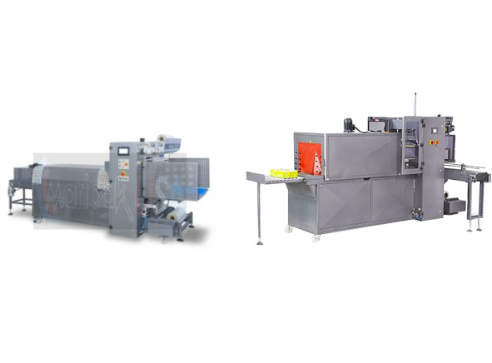Shrink wrapping has become an indispensable part of modern packaging solutions. Whether you’re walking down the aisles of a supermarket, browsing through electronics at a retail store, or receiving a neatly packaged product through e-commerce, chances are a shrink-wrapping machine played a vital role in how that item arrived in pristine condition. But how do these machines actually work? Let’s unwrap the fascinating process—from heat to seal—and see how technology has transformed the packaging world.
Understanding the Basics of Shrink Wrapping
At its core, shrink wrapping involves enclosing a product in a plastic film, which, when exposed to heat, contracts tightly around the item. The result? A clean, tamper-evident, and protective covering that enhances the product’s presentation while safeguarding it from dust, moisture, and handling damage.
Shrink wrapping machines automate and streamline this process. They’re used across diverse industries—from food and beverage to pharmaceuticals and consumer electronics—thanks to their speed, efficiency, and cost-effectiveness.
Types of Shrink Wrapping Machines
Shrink wrapping machines are available in various configurations to accommodate different product sizes, shapes, and packaging volumes. These typically include:
1. Manual Shrink Wrapping Machines
Used primarily by small businesses or for low-volume packaging, manual machines require an operator to manually place the product and wrap the film before heat is applied.
2. Semi-Automatic Machines
These machines automate parts of the process (like sealing) but still require human input for positioning the product. They strike a good balance between cost and productivity.
3. Fully Automatic Shrink Wrapping Machines
Best for high-volume packaging lines, fully automatic models perform the entire operation—from feeding and wrapping to sealing and shrinking—without any manual intervention.
Step-by-Step: How Shrink Wrapping Machines Work
Let’s take a deeper look at the step-by-step process of how a shrink wrapping machine functions, highlighting the transformation from film to seal:
Step 1: Product Insertion
The process begins with placing the product—either manually or via conveyor—into a shrink film. The film is usually made of materials like polyolefin, PVC, or polyethylene, known for their flexibility and shrinkability.
Step 2: Film Enclosure
Once the product is aligned, the machine encloses it in the shrink film. In L-bar sealers or side sealers, the film is cut and sealed to create a bag-like wrap around the item.
Step 3: Sealing
A heated sealing blade fuses the open ends of the shrink film, ensuring the product is completely wrapped. This creates a loose, transparent enclosure, which will be tightened in the next step.
Step 4: Heat Application
The sealed product is then conveyed into a shrink tunnel—a chamber that blows hot air at controlled temperatures. As the heat circulates, the film begins to contract, conforming tightly to the contours of the item.
This is where the magic happens: the molecular structure of the shrink film reacts to heat, snapping back to its pre-stretched state, which results in a snug and professional-looking package.
Step 5: Cooling and Set
After heat application, the product exits the tunnel and cools down. The film sets into place, becoming firm, clear, and durable. The end result is a neatly shrink-wrapped product, ready for distribution, retail, or storage.
The Role of Shrink Packing Machines in Efficiency
A well-designed shrink packing machine is more than just a packaging tool—it’s an engine of productivity. By automating multiple packaging steps, these machines reduce labor costs, enhance consistency, and speed up output. For manufacturers with high throughput requirements, investing in automated shrink wrapping systems can lead to significant gains in both efficiency and product presentation.
Conclusion
Shrink wrapping machines may seem like straightforward tools, but their underlying technology is a blend of physics, engineering, and precision design. From manually loading a product to applying the perfect amount of heat, every step plays a crucial role in achieving a tight, professional seal. As consumer expectations around packaging continue to rise, the importance of reliable, efficient shrink wrapping solutions has never been greater.

